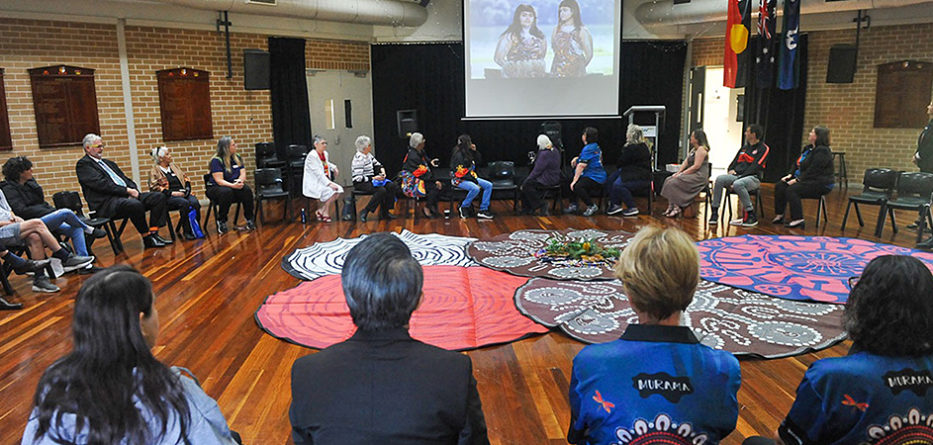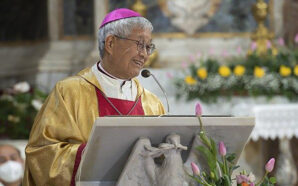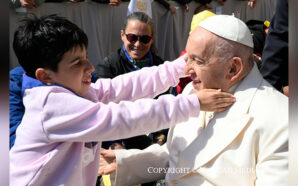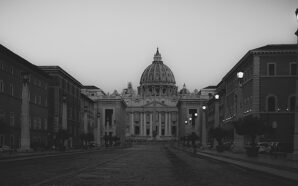Aboriginal and Torres Strait Islander people’s rich history and culture is something that people and systems across Australia have only recently begun to open, understand, and receive more fully, writes Fiona Dyball.
I remember walking the streets of a large city soon after I arrived in another country and noticing the way that people were moving together. I’d been unconsciously gravitating to the left side of the footpath but soon learned to move differently, carried by the natural flow of the people around me.
Harmonising something that seemed so simple invited me to be open and to consciously pay attention in this place. I continued to willingly immerse myself and received great gifts in return, as it turned out that others wanted to know and understand the person from Australia, too. Tuning in to the music of people’s everyday lives gradually lifted me into their song and encouraged me to share mine. It was a relief and a blessing to know that even though I was so far from home, I was becoming a welcome part of the rhythm of this place.
A colourful saying in Australia that celebrates intentional proximity as a marker of inclusion has undergone some curious development over the past 40 years. Each iteration sounds like a loud cockatoo squawk: “Get into it!” from the 1980s morphed into “Get amongst it!” in the early 2000s and has now become “Get around it!”.
Australians of all ages in wildly different places recognise that “getting around” someone or something is what happens when people support each other; like our flocks of sociable cockatoos, being together in community is expressed in strange and wonderful ways. The country is beautiful, diverse, and vast, and people have long recognised that they need each other to survive and thrive.
Being on the other side of the world and finding that people got around me as I immersed myself in their culture was a reminder of the best aspects of home I had experienced. A deep well of gratitude was my response to this unexpected and amazing grace.
In 2016, people who self-identified as Aboriginal and Torres Strait Islander Australians made up 2.8% of the total Australian population. This clearly puts First Nation traditional owners and custodians of the land in Australia into the category of a minority group in their own country.
However, minority status in terms of numbers does not negate the central place Aboriginal and Torres Strait Islander people hold in forming the heart and future of Australia through their presence and culture. Care of the land, her creatures and people remain central to the culture of Aboriginal and Torres Strait Islander people today, as they have for more than 60,000 years. A 2018 study of the genomics of Australian Aboriginal people by Cambridge University confirmed that theirs is one of the most ancient continuing cultures on earth.
I found myself sharing stories of Aboriginal and Torres Strait Islander people in my home across the sea, introducing others to art by Richard Campbell and Miriam-Rose Ungunmerr, and explaining terra nullius and the landmark Mabo case of 1992 that overturned it.
I played songs from Gurrumul, Paul Kelly, Tiddas, Bernard Fanning, and Midnight Oil. The collaboration between Lior and Nigel Westlake called Compassion where music gently but powerfully offers healing and transformation was received with reverence and often tears.
In sharing these pieces of my Australia, I realised I had embraced different worlds, and that stories about country, family, friends, and working with people young and old were central to my identity. These connections opened more longstanding questions of family history that remain unanswered. One day we will know more.
Aboriginal and Torres Strait Islander people’s rich history and culture is something that people and systems across Australia have only recently begun to open, understand, and receive more fully.
The daily work of real reconciliation continues everywhere through relationship building, truth telling, law making, and education. We are still not “one and free” but there is now widespread public awareness and strong commitment to the comprehensive cultural change required in 21st Century Australia to eradicate systemic and engrained racism.
The 2017 Uluru Statement from the Heart is the fruit of extensive consultation with Aboriginal and Torres Strait Islander peoples by Aboriginal and Torres Strait Islander peoples. In one voice, the statement generously seeks justice and self-determination in relationship for First Nations people:
We call for the establishment of a First Nations Voice enshrined in the Constitution. Makarrata is the culmination of our agenda: the coming together after a struggle. It captures our aspirations for a fair and truthful relationship with the people of Australia and a better future for our children based on justice and self-determination. We seek a Makarrata Commission to supervise a process of agreement-making between governments and First Nations and truth-telling about our history.
Dr Miriam-Rose Ungunmerr-Baumann AO is an Aboriginal Elder in the community of Nauiyu (Daly River) in the Northern Territory. A celebrated artist, wisdom keeper, educator, and activist, she was named the Senior Australian of the Year for 2021.
Miriam-Rose is a member of the Ngangiwumirr language group and speaks four other local languages as well as English. She was the first Indigenous teacher in the Northern Territory and was awarded an honorary doctorate in 2002 from the Northern Territory University. In 2013, she established the Miriam-Rose Foundation, with grassroots work centred on reconciliation. Miriam-Rose seeks to empower and support both Aboriginal and non-Aboriginal people to walk together in two worlds, respecting the knowledge and wisdom each bring.
In building a bridge between mainstream Australian society and the culture of Aboriginal people, Miriam-Rose recognises that there are gifts to be given and received. Ethical relationality is found in what Miriam-Rose calls dadirri: openness, still awareness, and deep listening to the earth, her creatures, and her people. Miriam-Rose’s invitation is to a radical conversion of heart and life.
Pope Francis calls for a revolution of tenderness centred on a culture of encounter. He affirms the centrality of the dignity of all people, and the need to stand against a throwaway culture that excludes and marginalises (Laudato Si’, #22).
Mercy is who God is, and what God desires for all creation (Evangelii Gaudium, #88 and #220). In fostering inclusive and respectful relationships characterised by proximity, listening, and awareness, Miriam-Rose invites all Australians to encounter the presence and culture of First Nations people:
“We learnt to speak your English fluently. For years, we have walked on a one-way street to learn the white people’s way. I’ve learnt to walk in two worlds and live in towns and cities, and even worked in them. Now is the time for you to come closer to understand us and how we live …. When you come to visit or work in our communities and leave your comfort zones, I ask that you bring your knowledge and wisdom. But we ask you also to learn and understand how we live and function in our communities and listen to what our needs are … dadirri … it’s yours, too ….”
Australia, let’s get into it, amongst it, and around it.
Fiona Dyball is a musician, teacher, composer, conductor, consultant, and liturgist based in Melbourne, Australia. She is an accomplished cantor, presenter, facilitator, writer, and workshop leader. Fiona finds great joy in seeing the way music and ritual brings people together, binds people in community, and heals. She is currently Coordinator of Liturgy, Faith and Mission at St Monica’s College in Epping, Victoria, serves on the National Liturgical Music Council for the ACBC, and on the National Executive of the Australian Pastoral Musicians Network.
This article was first published in the July 2022 edition of The Good Oil, the e-magazine of the Good Samaritan Sisters. Reproduced with permission.








